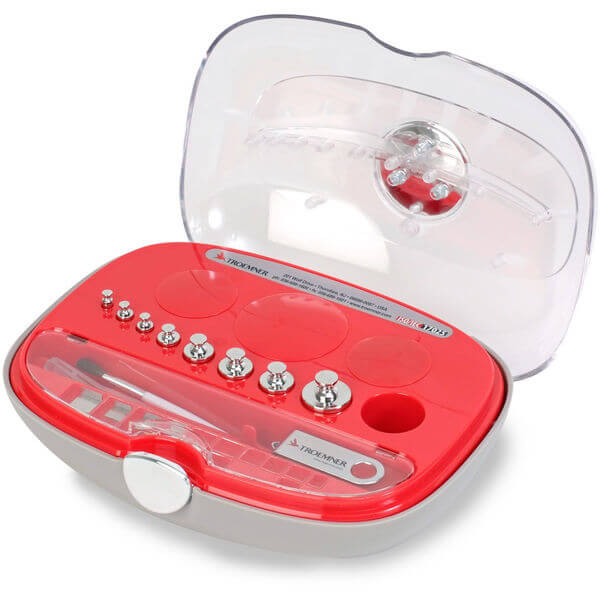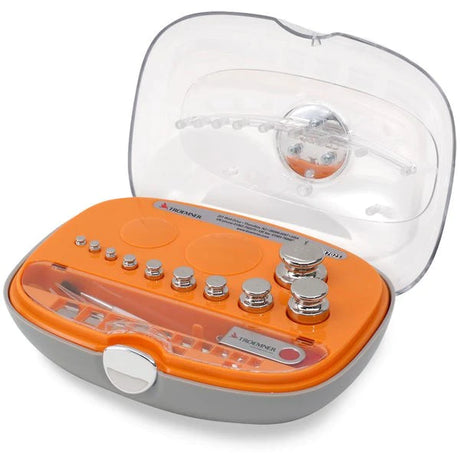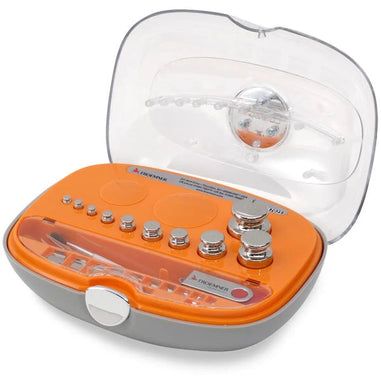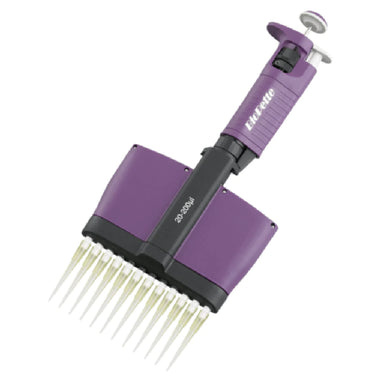- No products in the cart.
In the realm of measurements and scientific experiments, precision and accuracy are paramount. Every measurement, whether in a laboratory, industrial setting, or even in daily life, relies on the reliability of instruments. At the heart of this reliability lies the often-overlooked hero—calibration weights. In this comprehensive guide, we'll explore the critical role of calibration weights, their types, importance, and best practices to ensure accurate and precise measurements.
Understanding Calibration Weights:
Calibration weights are standardized masses used to calibrate scales and balances, ensuring their accuracy. These weights come in various shapes and sizes, ranging from small fractional grams to large kilograms, catering to the diverse needs of different applications. The fundamental principle is to establish a reference point against which the accuracy of a weighing instrument can be verified and adjusted.

Importance of Calibration Weights:
-
Accuracy Assurance:
- Calibration weights serve as the benchmark for accurate measurements. Regular calibration ensures that the readings from weighing instruments align with the true values, maintaining the integrity of experiments and processes.
-
Compliance and Standards:
- Many industries, especially those dealing with sensitive materials or products, are subject to strict regulatory standards. Calibration ensures compliance with these standards, providing a reliable basis for quality control.
-
Precision in Measurements:
- In fields such as analytical chemistry, where precision is critical, calibration weights play a pivotal role in achieving accurate results. Minute differences in measurements can have significant consequences, making precision an absolute necessity.
Types of Calibration Weights:
-
Standard Calibration Weights:
- These are the most common and widely used calibration weights. They adhere to strict tolerances set by national and international standards and are suitable for routine calibration.
-
Individual Calibration Weights:
- For applications that demand extremely high precision, individual calibration weights are manufactured to match the specific requirements of the instrument being calibrated. These are often used in industries where the highest accuracy is non-negotiable.
-
Fractional Weights:
- In analytical and research settings, where measurements need to be precise to the microgram or even nanogram level, fractional weights come into play. They allow for fine-tuning of balances and scales.
-
Stainless Steel Calibration Weights:
- These weights are corrosion-resistant and durable, making them suitable for laboratory environments where exposure to chemicals or frequent handling is common.
Best Practices for Calibration:
-
Regular Calibration Schedule:
- Establish a routine calibration schedule based on the frequency of use and the criticality of the measurements. Regular calibration prevents inaccuracies from accumulating over time.
-
Proper Handling and Storage:
- Handle calibration weights with care, using clean gloves to prevent contamination. Store them in a dedicated case to protect against scratches and ensure their accuracy over time.
-
Environmental Considerations:
- Calibrate instruments in the same environment where they will be used for measurements. Temperature, humidity, and atmospheric pressure can all affect the accuracy of measurements.
-
Documentation:
- Keep thorough records of calibration activities, including dates, results, and any adjustments made. This documentation serves as a reference for quality control audits and troubleshooting.
Choosing the Right Calibration Weights:
-
Material Matters:
- The material of the calibration weight should match the material of the objects being weighed. For example, stainless steel weights are ideal for stainless steel balances.
-
Accuracy Class:
- Calibration weights come with different accuracy classes. Choose a class that aligns with the precision requirements of your instruments and applications.
-
Traceability:
- Opt for weights with traceable certificates. This means that the calibration process is documented, and the weights can be traced back to national or international standards.
-
Consider Environmental Conditions:
- If your lab or facility is exposed to harsh environmental conditions, such as corrosive chemicals, choose weights that are resistant to these conditions.
Conclusion: Elevating Measurement Confidence with Calibration Weights
In the world of measurements, precision and accuracy are the bedrock of reliable results. Calibration weights, often unsung heroes in laboratories and industries, play a crucial role in ensuring that measurements are not just numbers but true representations of the quantities being measured. By understanding the types of calibration weights, adopting best practices in calibration processes, and choosing the right weights for specific applications, laboratories and industries can elevate their measurement confidence.
For over 40 years, Lab Pro Inc. has been committed to delivering the highest quality lab equipment, lab supplies, Excelta hand tools, reagents, distance learning kits, and cleanroom PPE apparel. Renowned by global medical device companies and laboratories, we ensure exceptional quality in every product. Contact us online or call 888-452-2776 to learn more. Discover top-notch lab supplies and elevate your experiments today!












































